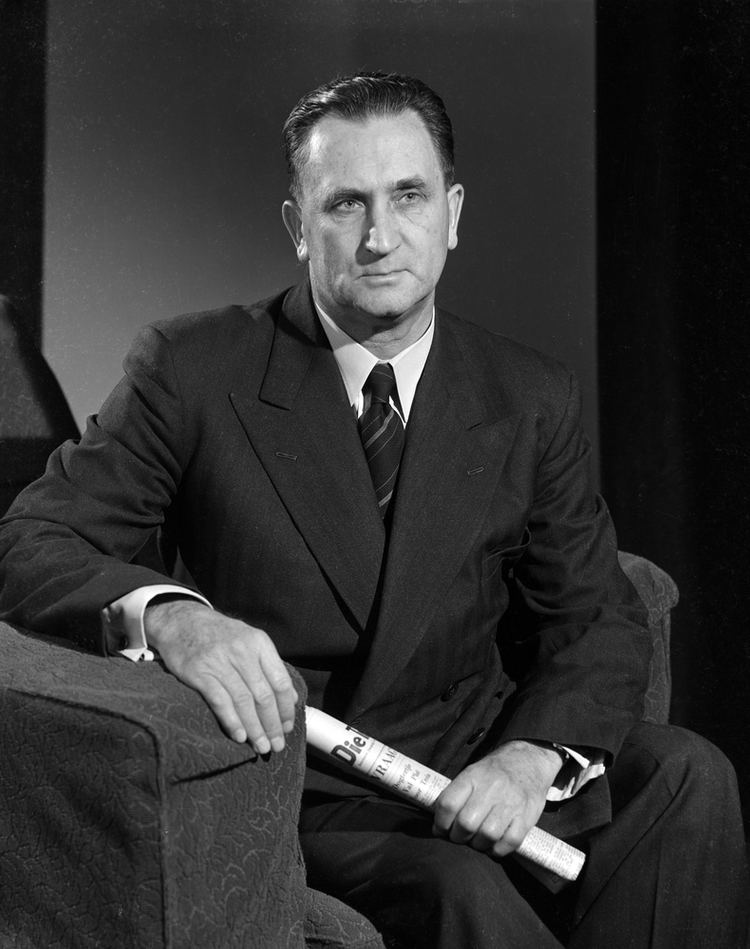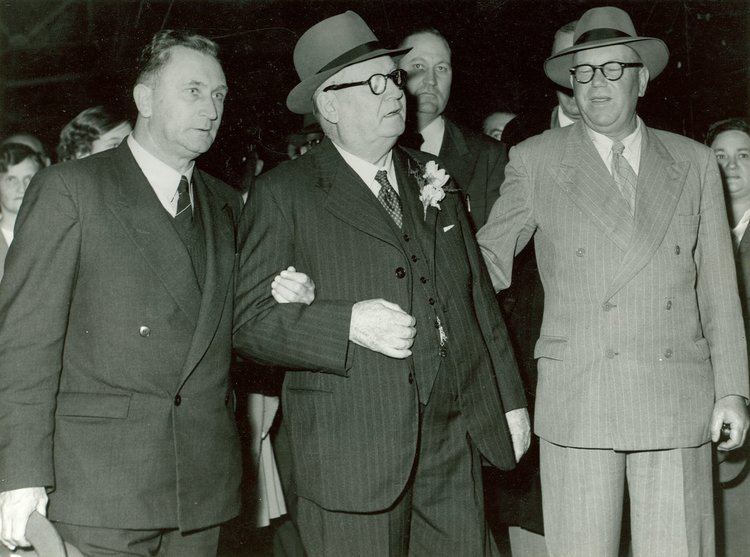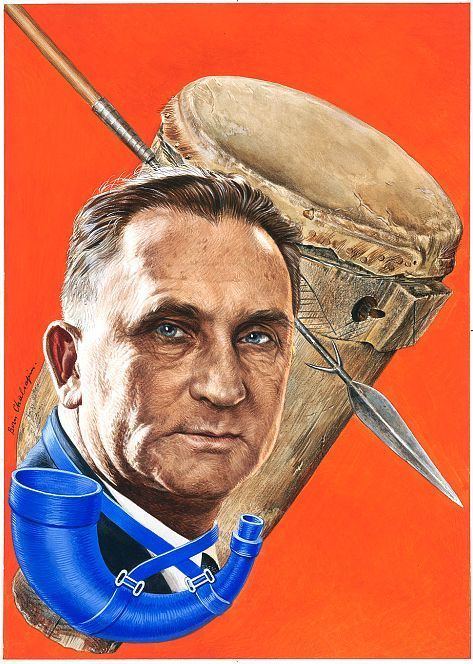Monarch Elizabeth II Name Johannes Strijdom Party National Party | Political party National Party Succeeded by Hendrik Verwoerd Children Johannes
Estelle Resigned August 24, 1958 | |
 | ||
Born 14 July 1893
Klipfontein, Cape Colony ( 1893-07-14 ) Resting place Heroes' Acre, Pretoria, Gauteng, South Africa Alma mater Victoria College
University of Pretoria Died August 24, 1958, Cape Town, South Africa Spouse Susan de Klerk (m. 1931–1958), Marda Vanne (m. 1931–1931) Education Stellenbosch University, University of Pretoria | ||
Preceded by Daniel Francois Malan | ||
Johannes Gerhardus Strijdom, (also spelled Strydom) commonly called JG Strydom or Hans Strydom (14 July 1893 – 24 August 1958), nicknamed the Lion of the North, was Prime Minister of South Africa from 30 November 1954 to 24 August 1958. He was an uncompromising Afrikaner nationalist, and a proponent of racial segregation that led the way to the establishment of the system of apartheid.
Contents

Early life

He was born on the family farm Klipfontein near Willowmore in Cape Colony and trained as a lawyer at Victoria College (which later became the University of Stellenbosch) and the University of Pretoria. His father Petrus Strijdom was a very well known farmer and innovator in the Baviaanskloof where Strijdom was born. He owned three farms in the kloof of which the main farm was Sandvlakte on which the local school, church and shop was sited. He owned businesses and shops right down to the Gamtoos valley (birthplace of the well known Koi woman Saartjie Baartman). He also sold Baboon fur and manufactured shoes and soap amongst other products.

Strijdom served in the German South West Africa campaign in World War I, as a member of the South African Medical Corps and, later, of Helgaardt's Scouts, where he reached the rank of corporal.

Strijdom later settled in Nylstroom, Transvaal. He identified strongly with this area and its people and became a local community leader among the Afrikaners. In 1929, Strijdom was elected to the House of Assembly as MP for Waterberg, representing the National Party (NP) headed by General J.B.M. Hertzog. Strijdom was also leader of the NP in Transvaal, by far the most important province of South Africa, and as such had a strong power base.
After the National Party of J.B.M. Hertzog merged with the South African Party of General Jan Smuts and formed the United Party (UP) during the World Economic Crisis in 1932, Strijdom was part of the break-away faction of the National Party, named the Gesuiwerde Nasionale Party (Purified National Party). Later, after the United Party was formed, the GNP became known as the (Reunited) National Party under the leadership of Dr. D. F. Malan. Malan, Strijdom and their followers distrusted Smuts and opposed his pro-British policy. Most of the National Party's MPs stayed with Hertzog, and as Strijdom was loyal to Malan, he was the only MP from Transvaal to support Malan's ideals.
Strijdom favoured the establishment of a republic, but this was not achieved until 1961.
Apartheid era
After the surprising victory of the National Party in 1948, won on the program of implementing a strict program of apartheid or ethnic segregation and white minority rule, Malan became Prime Minister of South Africa and Strijdom became Minister of Agriculture and Irrigation. Although it was not one of the classic portfolios, it was apparently Strijdom's choice since he had a keen interest in agriculture and was a part-time farmer. Strijdom was not so pleased with the portfolio although he was fond of farming. Malan gave him the portfolio because his young wife disliked Strijdom. That was also why Malan tried his best to get Nicolaas Havenga to succeed him as Prime Minister, rather than Strijdom.
Prime Minister
On 30 November 1954, he was elected leader of the National Party and became Prime Minister of South Africa after the resignation of Malan and against the latter's will, who preferred the more moderate Havenga, Minister of Finance, as his successor. However, Strijdom was popular among NP party members and people trusted him to push things smoothly forward towards a republic, something Malan was considered to be only lukewarm about. During Strijdom's term as Prime Minister, he moved full steam ahead to remove ties with the British monarchy and deepened the Afrikaner ascendency in South Africa, while strengthening the policy of apartheid.
With regard to racial policies, he believed strongly in the perpetuation of white minority rule and during his term "Coloured" voters were removed from the common voters roll and put on a separate Coloured voters roll, something that Malan started to do but could not push through. The extended Treason Trial of 156 activists (including Nelson Mandela) involved in the Freedom Charter, happened during Strijdom's term in office. He also managed to further extend the NP's parliamentary seats during the general election in 1957. Strijdom's government also severed diplomatic relations with the Soviet Union.
During his last year in office, his weak health (thought to be cancer) led to long terms of absence and he died on 24 August 1958 in Cape Town and is buried in Pretoria in the Heroes' Acre.
Private life
JG Strijdom was known for his dedication, honesty, and incorruptibility; however, he also was stubborn and not open to change of course. He was nicknamed "The Lion of the North", because of his aggression and forthrightness.
Strijdom married the actress Margaretha van Hulsteyn, but they divorced within a year. His second wife was Susan de Klerk, aunt of future President F W de Klerk. She bore Strijdom two children: Johannes and Estelle. Susan Strijdom died in 1999 and Estelle (Crowson) in 2009.
Legacy
There are still various monuments dedicated to Strijdom in South Africa. One monument in central Pretoria, which featured his bust, collapsed in 2001 injuring two people. His house in Modimolle (formerly Nylstroom) is now a museum, which holds parts of the collapsed bust.
In the Greater Johannesburg, there is a suburb and a street named after Strijdom, although the spelling "Strydom" is also used, though a couple have already been renamed, one being Malibongwe Drive. In Weltevredenpark, a suburb of Roodepoort, there is a street named JG Strydom Road. Randburg also has a business district called Strijdompark named after him.
The Hillbrow Tower in Johannesburg was officially named the J.G. Strijdom Tower until 1995, when, shortly after the end of apartheid, it was renamed the Telkom Hillbrow Tower.
In Windhoek, then in South West Africa, the main airport was named J.G. Strijdom Airport following its opening in 1965. Following the country's independence as Namibia in 1990, it was renamed Hosea Kutako International Airport.
